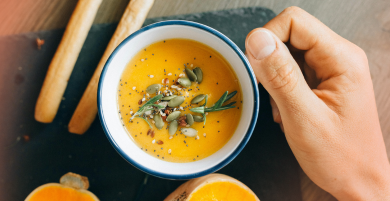For anyone navigating unpredictable cycles, painful periods, or hormonal ups and downs, seed cycling has emerged as a popular food-based strategy for menstrual support. Though it may sound like another wellness trend, it’s rooted in nutritional logic– and many report positive changes in their menstrual cycles after trying it.
What Is Seed Cycling?
Seed cycling is a gentle, food-based practice that involves eating specific seeds during different phases of the menstrual cycle to support hormone balance. The cycle is split into two main phases:
- Follicular Phase (Day 1 to Ovulation): Consume 1 tablespoon each of flax and pumpkin seeds daily.
- Luteal Phase (Ovulation to Next Period): Switch to 1 tablespoon each of sunflower and sesame seeds daily.
The goal is to naturally support oestrogen and progesterone levels through the nutrients in these seeds.
Why Try Seed Cycling?
Though there’s limited clinical research on seed cycling as a formal protocol, each seed used in the practice offers known hormonal and metabolic benefits:
-
Flax Seeds
Rich in lignans and omega-3s, which may help regulate oestrogen levels.
-
Pumpkin Seeds
A good source of zinc, which supports progesterone production and ovarian function.
-
Sunflower Seeds
Provide vitamin E, which aids in hormone balance and reduces inflammation.
-
Sesame Seeds
Contain lignans and selenium, known to support hormone metabolism and liver detoxification.
Seed cycling can help with:
- Reduced PMS symptoms
- More regular cycles
- Fewer mood swings
- Better skin and fewer cramps
While anecdotal, these outcomes are aligned with what might be expected from consistent intake of nutrient-dense, hormone-supportive foods.
How To Start Seed Cycling
The method is simple and flexible:
- Use raw, organic seeds whenever possible.
- Grind the seeds (especially flax and sesame) to improve nutrient absorption.
- Store ground seeds in the refrigerator to maintain freshness.
- Add 1 tablespoon each of the recommended seeds for your current cycle phase to smoothies, yogurt, oats, salads, soups, nut butters or hummus.
To make the routine easier, some people use pre-portioned seed cycling kits that include phase-specific blends.
Morning Or Night: When’s the Best Time?
There’s no strict rule on when to eat the seeds. What matters most is daily consistency. Whether added to breakfast or dinner, choose a time that fits easily into your routine.
Are There Any Side Effects?
For most people, seed cycling side effects are minimal to none. Seeds are natural, whole foods. However:
- Individuals not used to high-fibre diets may experience mild bloating or changes in digestion.
- Those with seed allergies or hormone-sensitive conditions should consult a healthcare provider first.
- People on medication should check for potential interactions.
Does Science Support Seed Cycling?
While large-scale, controlled trials on seed cycling itself are lacking, the practice is grounded in nutritional and hormonal science:
- Lignans in flax seeds have been shown to support healthy oestrogen metabolism.
- Zinc and vitamin E, found in pumpkin and sunflower seeds respectively, are vital for hormone production and menstrual regulation.
- In conditions like PCOS, diet and lifestyle interventions are widely recommended to support hormonal balance.
Seed cycling should not be treated as a cure, but rather as a low-risk, potentially beneficial addition to a broader hormonal health strategy.
Final Thoughts
Seed cycling offers a gentle, food-based approach to supporting hormonal balance and improving menstrual cycle health. While not a medically proven treatment, its foundation in nutrient science makes it a safe and nourishing practice to explore. For many, it represents a mindful way to reconnect with their cycle and make small, consistent choices in favour of hormonal wellbeing.
As always, it’s wise to check with a healthcare provider or nutritionist before making dietary changes– especially for those with pre-existing conditions or on medication.


































































